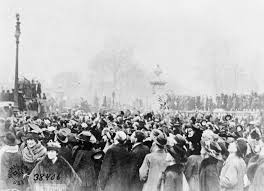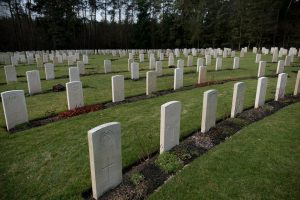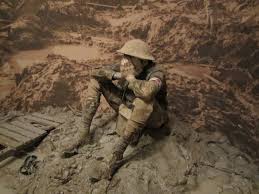LEST WE FORGET – OR WE DIDN’T KNOW TO START WITH
At the 11th hour of the 11th day of the 11th month 2018 it is 100 years since the agree d end of fighting of the First World War. And like many before us, we will look to observe the two minutes silence wearing my red poppy proudly as a symbol of respect to those that paid the ultimate sacrifice.
d end of fighting of the First World War. And like many before us, we will look to observe the two minutes silence wearing my red poppy proudly as a symbol of respect to those that paid the ultimate sacrifice.
But whilst we stand to remember the fallen, it is this story behind the Remembrance Day service and how it evolved after the ‘War to End All Wars’ finished that is of particular interest 100 years on.
Armistice Day
It is general knowledge that the Remembrance Day commemorates the signing of the Armistice between the Allies and Germany at Compiègne, France. But rather than the 11.00am time slot we remember each year, the agreement had actually been signed six hours earlier at 5am. There was a unilateral promise that all hostilities on all fronts would stop at the 11th hour on the 11th day of the 11th month precisely which is where we get our time from.
There is some irony to this as it is reported that around 3,000 soldiers lost their lives on the 10th of November just 24 hours before the end. It is also recognised that officially the war didn’t actually end until 28th of June 1919 and the Treaty of Versailles. Whether a coincidence or not, this was exactly five years to the day after the assassination of the Archduke Franz Ferdinand of Austria – claimed by many to be the shot that started the Great War in the first place.

The First Remembrance Day
The first Armistice Day or Remembrance Day was held at Buckingham Palace with King George V hosting a “Banquet in Honour of the President of the French Republic” on the evening of the 10th of November 1919. This was followed by the first official Armistice Day ceremony being held in the Buckingham Palace grounds the following morning on the 11th. A practise that set the precedent for future remembrance services for decades to come.

Two Minutes Silence
The concept of having a two minutes silence was a South African idea first proposed to Lord Milner by the South African, Sir Percy Fitzpatrick. Lord Milner was one of the most important members of David Lloyd George’s War Cabinet and this time for quiet reflection had already been adopted as a practice in Cape Town from April 2018 where a vigil was carried out monthly. Within weeks of this two minutes silence being publicised, the idea had spread throughout the whole of the British Commonwealth as a way to honour and respect those that had made the ultimate sacrifice. What is less well known is that only the first minute is supposed to be held to remember the 20 million or so that died during that war. The second minute is there to think about those that had been left behind but deeply affected by the conflict. These would generally be the spouses, children and families of those that had perished.
The Story behind the Poppy as a symbol
In 1915, after a harsh winter on the front, the Poppy was first main flower seen to grow in the war torn fields of ‘no-mans-land’ and around the many graves of the fallen soldiers. Its vibrant colour turned the fields blood red and had a major impact on the many that saw it. One man, an experienced Canadian Doctor, Lieutenant Colonel John McCrae, a soldier, field surgeon and a war poet, was inspired by the sigh
t that during the second battle of Ypres, in Belgium. He wrote the now famous war memorial poem “In Flanders Fields’ which describes this vivid scene of poppies. It is said that at the time of writing the famous verse, he originally discarded it, but his colleagues encouraged him to send it into the press to be published and as a result, it first appeared in the Punch Magazine of Dec 8th 1915.
McCrae died of pneumonia on the 28th January 1918 and his body still remains in France to this day, but it was the vivid imagery of his poem that helped to inspire the use of Silk poppies as a symbol of remembrance in the UK.
Championed by a Frenchwoman named Anna Guerin, as a member of the French YWCA, Anna was at the American Legion convention in 1920. Here she saw that the sale of a large number of artificial poppies in her home country, helped to fund any support needed for those still suffering the after effects of war, particularly orphaned children.
Anna Guérin began production of fabric poppies and travelled the world encouraging countries to adopt the symbol. She made arrangements for the first nationwide distribution of poppies in America, working with American academic, Moina Michael, and saw the promotion of the poppy in Canada and the adoption of it by the Canadian League as well as New Zealand and Australia.
It was in 1921 when she met with Field Marshal Earl Douglas Haig, founder and president of the British Legion, that she encouraged him to adopt the poppy as an emblem for the Legion. She then subsequently persuaded them to purchase 9 million of her silk poppies – and so began the very first British Legion Poppy Day appeal in the autumn of that year with hundreds of thousands of French-made poppies selling all across the UK.
That one poppy day raised the equivalent of £30 Million pounds in today’s money and so established a national tradition that both supports and coexists with the annual remembrance service with substantial success.
ENDS

 d end of fighting of the First World War. And like many before us, we will look to observe the two minutes silence wearing my red poppy proudly as a symbol of respect to those that paid the ultimate sacrifice.
d end of fighting of the First World War. And like many before us, we will look to observe the two minutes silence wearing my red poppy proudly as a symbol of respect to those that paid the ultimate sacrifice.